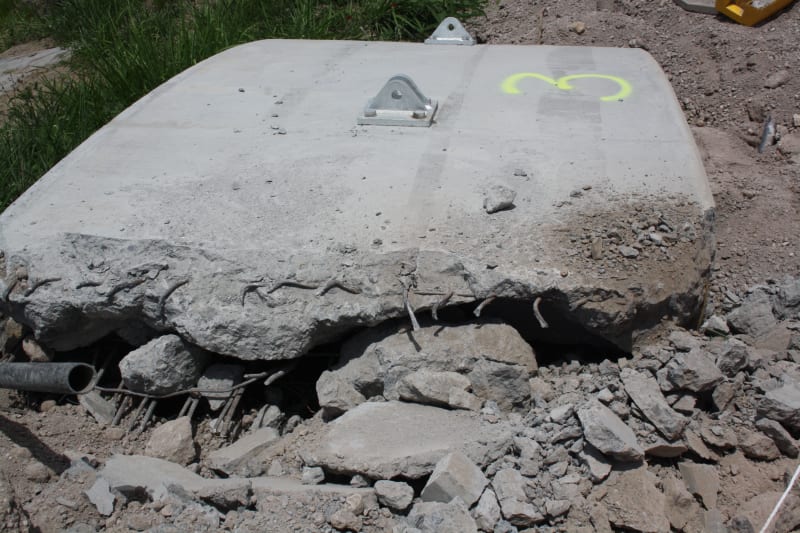sdz
Structural
- Dec 19, 2001
- 567
AS3600 - 8.1.6 Minimum strength requirements
8.1.6.1 General
The ultimate strength in bending (Muo) at critical sections shall be not less than (Muo)min, the
minimum required strength in bending at a critical cross-section, and is given by—
(M uo)min =1.2 [Z f´ct.f + Pe / Ag Pee]
Removing the prestressing term
(M uo)min =1.2 Z f´ct.f
Let M*=ø Mu =ø (M uo)min =1.2 ø Z f´ct.f then
for ø=0.85, M* = 1.02 Z f´ct.f ; using class N reinforcement
for ø=0.65, M* = 0.78 Z f´ct.f ; using class L reinforcement
The effect is that when designing for minimum strength the reinforcement Ductility Class has no effect.
Similarly, in the same clause;
For reinforced concrete cross-sections, this requirement shall be deemed to be satisfied for
the direction of bending being considered if tensile reinforcement (Ast) is provided such
that—
Ast ≥ [αb (D/d)2 f´ct,f/fsy )bw d . . 8.1.6.1(2)
Again the reinforcement Ductility Class has no affect.
However if the calculated design moment is even 1.001 times the minimum then there is an immediate step in the steel required.
It would appear to me much more sensible, and even easier, to set
M*min=Z f´ct,f
and then design normally including the appropriate ø value for the ductility class, in which case;
M*min=Z f´ct,f =0.85 Mu for normal ductility reinforcement, and
M*min=Z f´ct,f =0.65 Mu fornormal low ductility reinforcement
8.1.6.1 General
The ultimate strength in bending (Muo) at critical sections shall be not less than (Muo)min, the
minimum required strength in bending at a critical cross-section, and is given by—
(M uo)min =1.2 [Z f´ct.f + Pe / Ag Pee]
Removing the prestressing term
(M uo)min =1.2 Z f´ct.f
Let M*=ø Mu =ø (M uo)min =1.2 ø Z f´ct.f then
for ø=0.85, M* = 1.02 Z f´ct.f ; using class N reinforcement
for ø=0.65, M* = 0.78 Z f´ct.f ; using class L reinforcement
The effect is that when designing for minimum strength the reinforcement Ductility Class has no effect.
Similarly, in the same clause;
For reinforced concrete cross-sections, this requirement shall be deemed to be satisfied for
the direction of bending being considered if tensile reinforcement (Ast) is provided such
that—
Ast ≥ [αb (D/d)2 f´ct,f/fsy )bw d . . 8.1.6.1(2)
Again the reinforcement Ductility Class has no affect.
However if the calculated design moment is even 1.001 times the minimum then there is an immediate step in the steel required.
It would appear to me much more sensible, and even easier, to set
M*min=Z f´ct,f
and then design normally including the appropriate ø value for the ductility class, in which case;
M*min=Z f´ct,f =0.85 Mu for normal ductility reinforcement, and
M*min=Z f´ct,f =0.65 Mu for

